This is How YOU BUILD A Massive Chest
COMPLETE STRATEGY
For the vast majority of you reading this, the basics is all you’ll need to maximize muscle growth and to be honest, trying to go TOO DEEP into “advanced techniques” will mostly likely stall your muscle growth more than help it.
Also, notice that I never used the word “beginner” and that’s because the basics apply to everyone. If anything, the longer you train the more lost you might feel because social media has convinced you that you always need to be “switching things up”.
So, let’s take a deep breath, refocus, and dive in the basics!
Chest Training 101: The Exercises
BASIC is the theme of this series so forget about fancy exercises. Instead, we’ll focus on FOUR fundamental movements that will set the foundations for your chest growth.
- The Push-Up: Even after training for over 20 years I still incorporate variations of Push-Ups. But form is key here. Half-reps and baby pumps are pointless, so if this is you, you need to stop and pay attention.

Push-ups are KEY in developing your pressing strength while also strengthening your serratus, shoulder blades and core. So, when you’re going up and down you need to focus on what’s happening from head to toe. Starting from the bottom, keep your feet together, tuck your pelvis and flex your glutes, contract and squeeze your core, elbows are slightly tucked and your shoulders are not rolled forward.
Then, as you lower your body bring your chest TO THE GROUND and as you press up don’t stop as soon as your elbows lock. You need to press through your serratus all the way to the top.
Once you’ve mastered proper form you can find more push-up variations to train with by clicking this video link HERE.
- The Chest Press: This should become your primary chest training exercise once you’ve mastered the Push-Up. I say this because the Chest Press, just like the Push-Up, is a full-body movement but with the potential to press A LOT more weight. However, most guys just lay down, grab the barbell and start flailing their arms around. Then, they get upset when they don’t see any real progression in terms of strength or muscle growth.
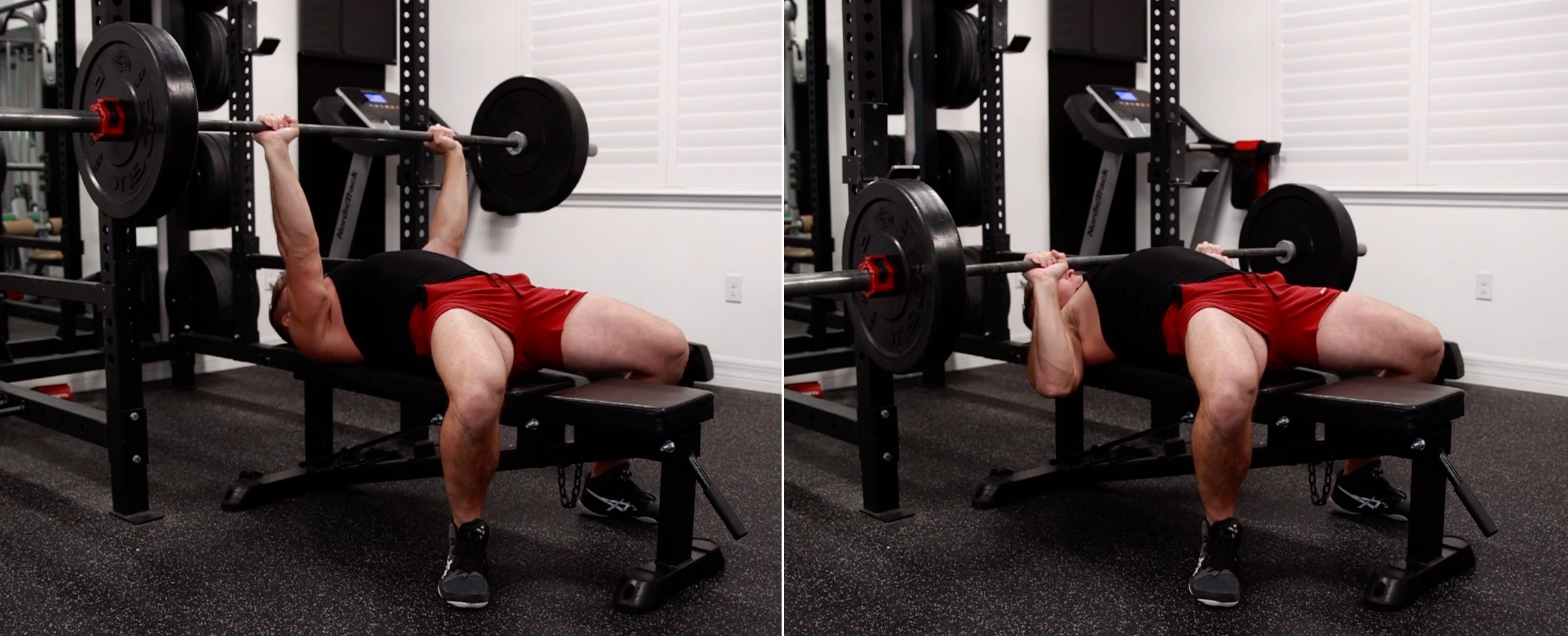
But don’t worry, it’s not your fault, you just need a better understanding of the exercise. You see, the chest press actually begins at the feet. They need to be planted on the ground so that you can create the stability you need throughout your entire body to lift as heavy as you can.

Personally, I like to first find my hand placement and then pull my chest to the barbell to get my foot positioning. Then, from here, I swing under the barbell and plant my shoulders on the bench. 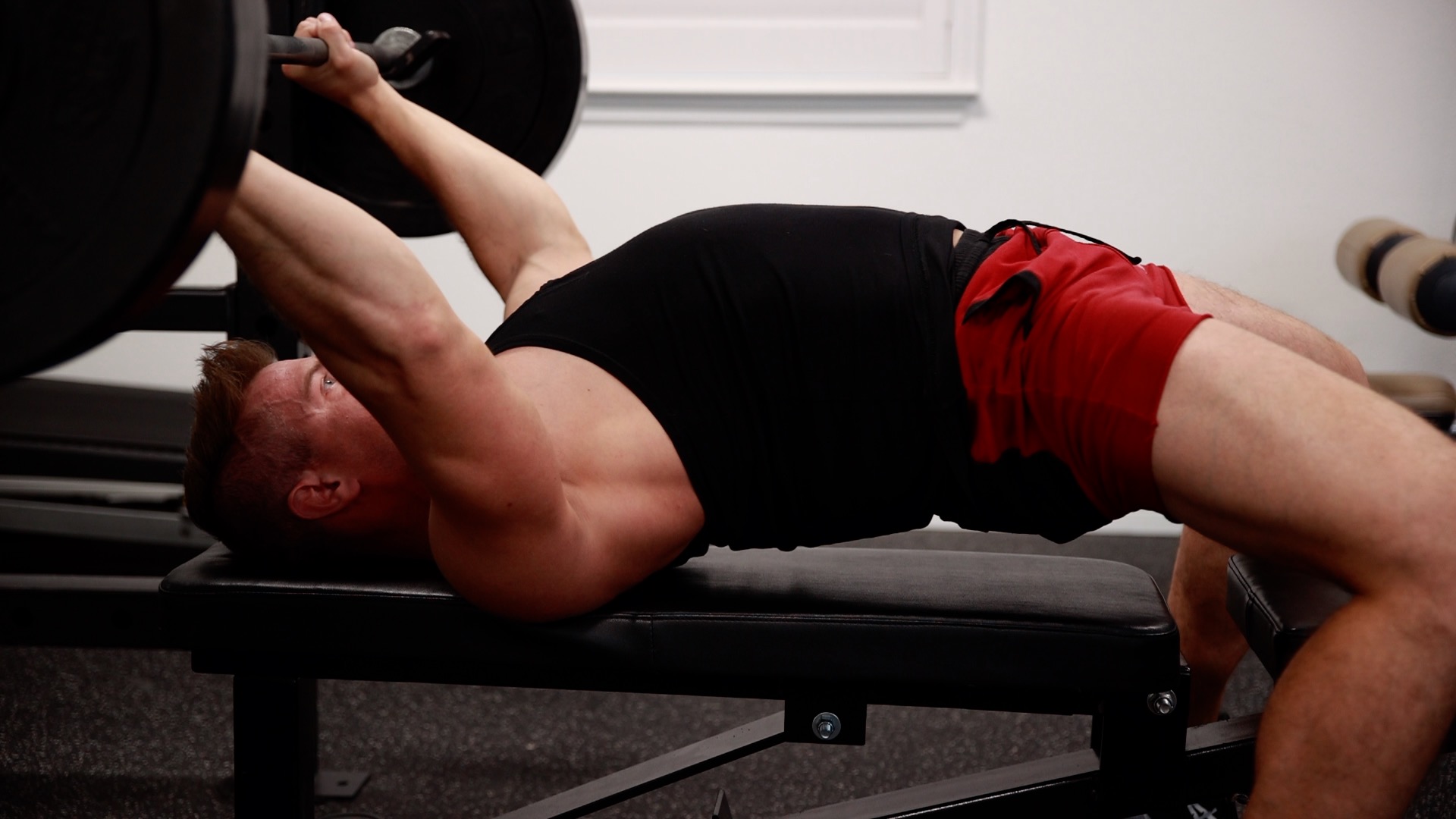
Next, I slide UP the bench and use the friction to help pack and depress my shoulder blades until my eyes line-up with the barbell. Then from here, I lower my glutes to the bench while keeping them flexed which will create an arch in my lower back, then I push my knees out and take in a breath to stabilize my core before unloading the weight.

If done correctly, your elbows should be slightly tucked in toward your core and you should have no problem bringing the barbell down to your chest as you perform your reps.
Now, at this point you’re thinking, wow, that’s a lot to take in. Well, that’s actually a good thing because it goes to show that you might not have known as much as you thought about the basics of one of the most common exercises when it comes to chest training. But if you think you need a bit more help with proper form you can check out my “How To” Bench Press video right HERE.
- The Dip: Now, unlike the bench press, during dips your upper body is not supported by the bench and your feet are off the ground therefore it requires more stabilization and activates more muscles groups. But to target your chest correctly, you want to lean slightly forward on the dip bars and keep your head down. This will help you move quite a bit of the focus from your triceps to your chest.

Then as you get stronger, utilize a dip belt to add weight and continue to progress with the movement. But be warned, if dips are not currently a staple in your programming and you’ve been training for a while, start with bodyweight. Just because you can bench press 225lbs doesn’t mean you should load up 2 plates on dips. First you need to acknowledge and improve the instability you might feel in your wrists and shoulders now that you’re working through a different movement pattern. But don’t worry, after a week or two you will be adding weight to the exercise.
- The Dumbbell Incline Press: Could you do a Barbell Press instead? Yes, you could, but most of the guys I see incline pressing in my gym never bring the barbell all the way down to their chest or they bounce it off the top. Not good for chest GROWTH. So, let’s stick with dumbbells so you guys can pack those shoulders tight, avoid the bounce, and go a bit deeper on those reps to get a better stretch on your chest.

As for your form, it’s very similar to the flat bench. Feet flat on ground, knees pushed out, glutes and core flexed, slight lower back arch and shoulders packed. Also, pay attention to your elbows and make sure they stay tucked in. A slight flaring as you press the weight up is ok, but if they look like this…you are going to absolutely wreck your shoulders.

Chest Training 101: The Weight
Now, let’s talk about how much weight you should be lifting. I don’t want any of you to feel like if your max weight isn’t going up, you’re not making gains. Remember, the goal here is to make this fitness thing a permanent part of your lifestyle, right? So, in the beginning you will see BIG JUMPS in how much weight you’re lifting, but after a while those jumps will get smaller and smaller. Especially if you’re more of a recreational gym goer versus a power lifter.

Also, the mindset of always having to “ADD MORE WEIGHT” has caused a lot of guys to develop this mentality that they need to start their working sets with lighter weight just so they can “add weight” with each set. Don’t be that person. Instead, understand that lifting HEAVY is not particularly necessary to build muscle. It’s not the lifting “heavy” that builds the muscle, it’s “progressing your intensity” and this can be done a few ways.
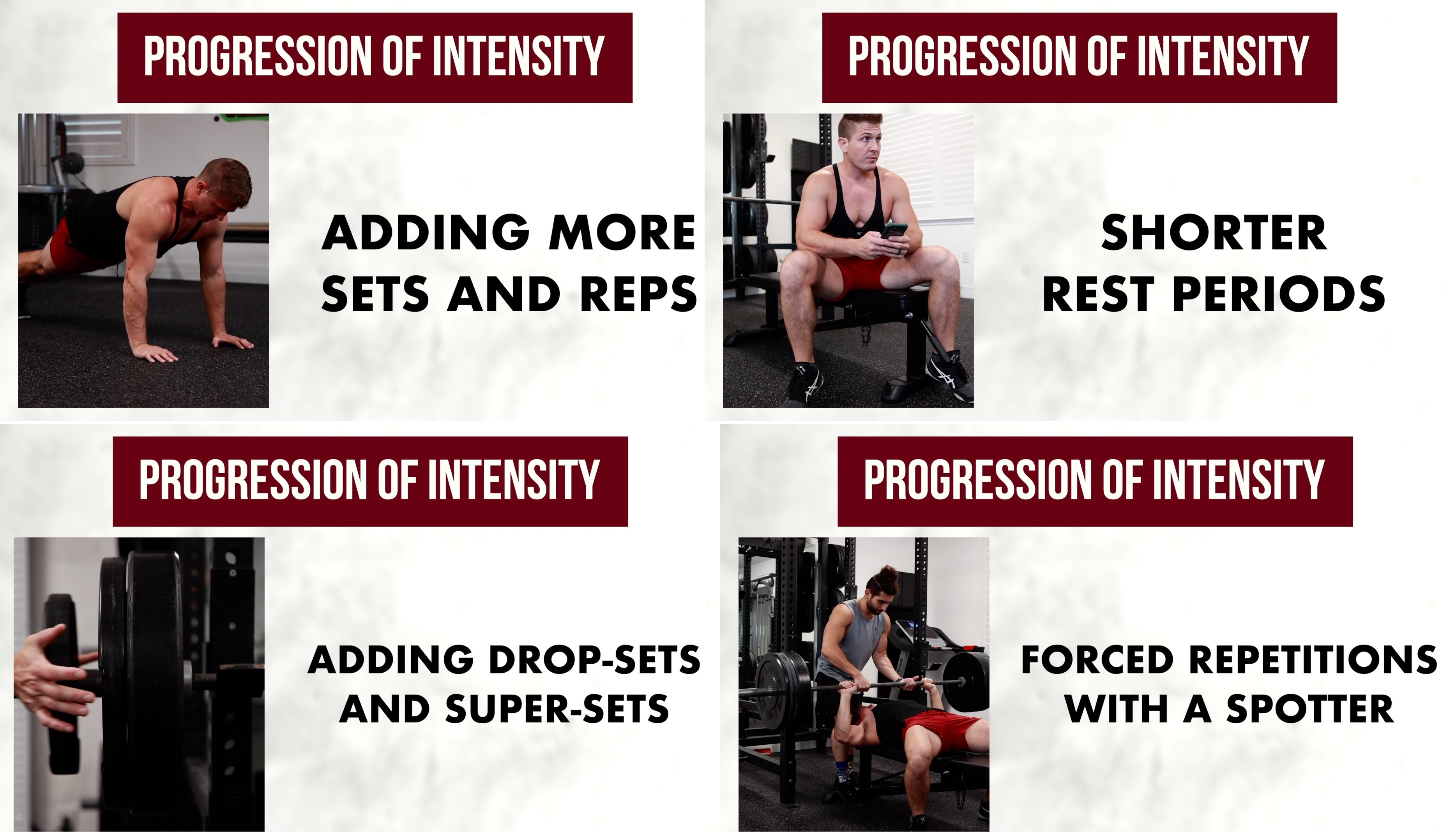
Yes, of course “adding more weight” is a clear option, but “progression” can also be achieved by adding more sets and reps, increasing the intensity of the set with shorter rest periods, adding drop sets and super sets or even adding in “forced reps” with a spotter.
All of these are considered ways to progress over your previous workouts and WILL force growth.
Chest Training 101: The Warm-Up
But before you start doing any exercises, you need to warm-up and I don’t just mean a “lighter” set of the bench press before your working sets.
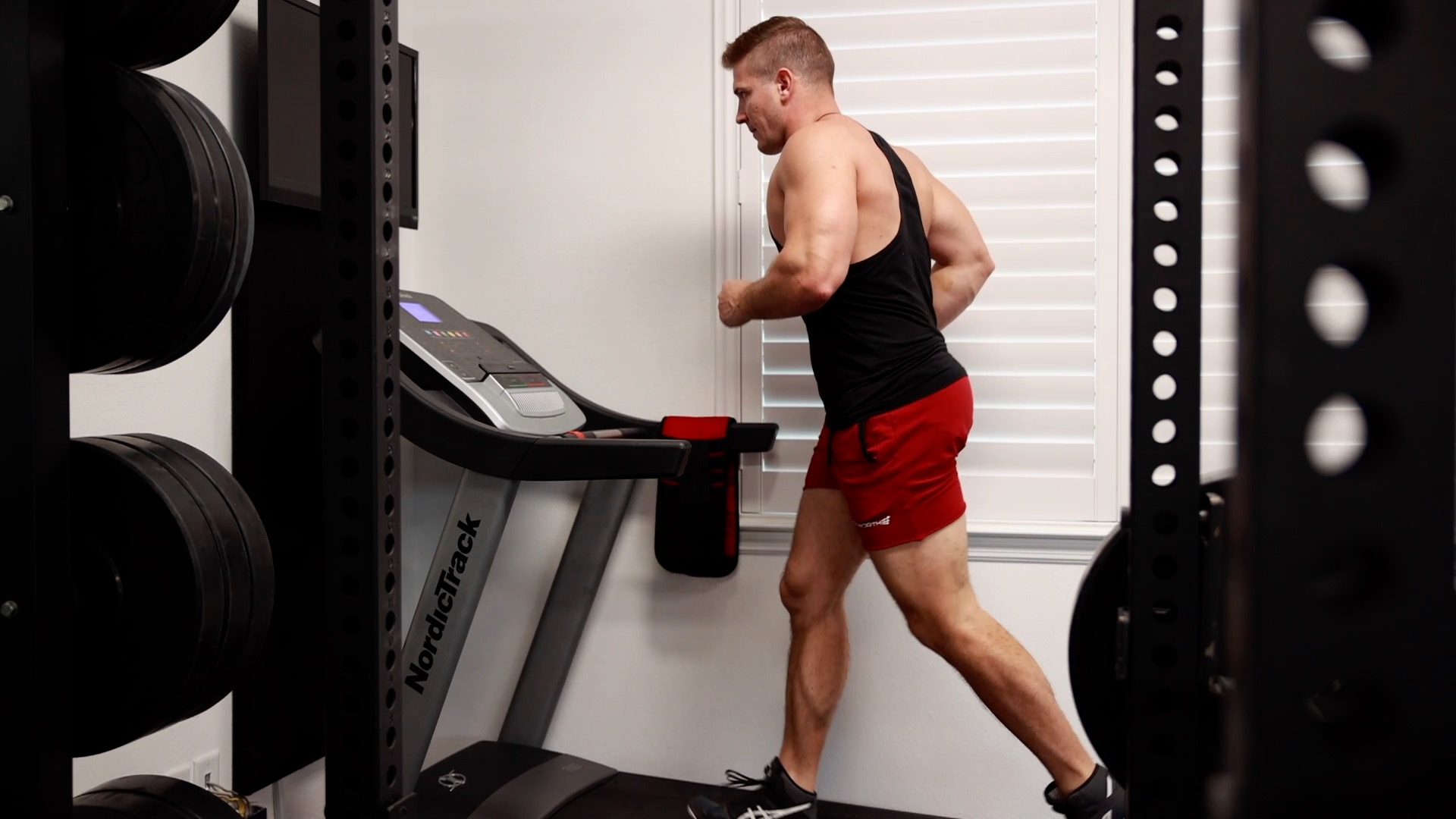
Instead, before ANY training session I recommend you to either perform some light cardio such as a 5-minute easy jog to get your blood pumping or a quick circuit of bodyweight exercises like Push-Ups and Air Squats to achieve the same goal while also working on your mobility.

I’d also recommend you do some shoulder specific warm-ups before and in-between your working sets, especially if you don’t have the best mobility. Personally, I keep a band in my gym bag for this very reason.
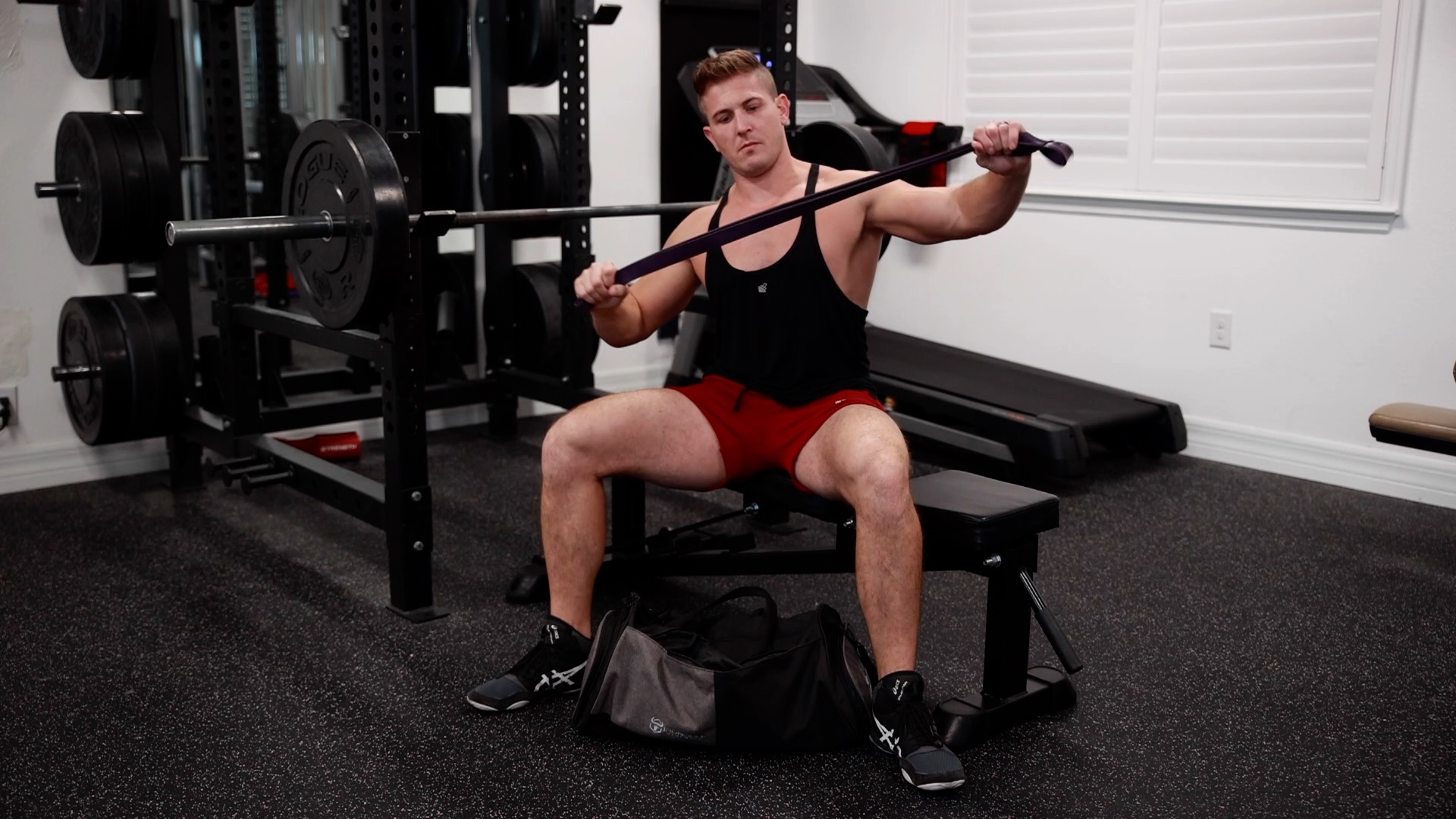
This way I can hit shoulder breakers between sets to help me loosen up. Single-Arm shoulder rotations work great too. Just make sure you do them with your shoulder supported and NOT standing.
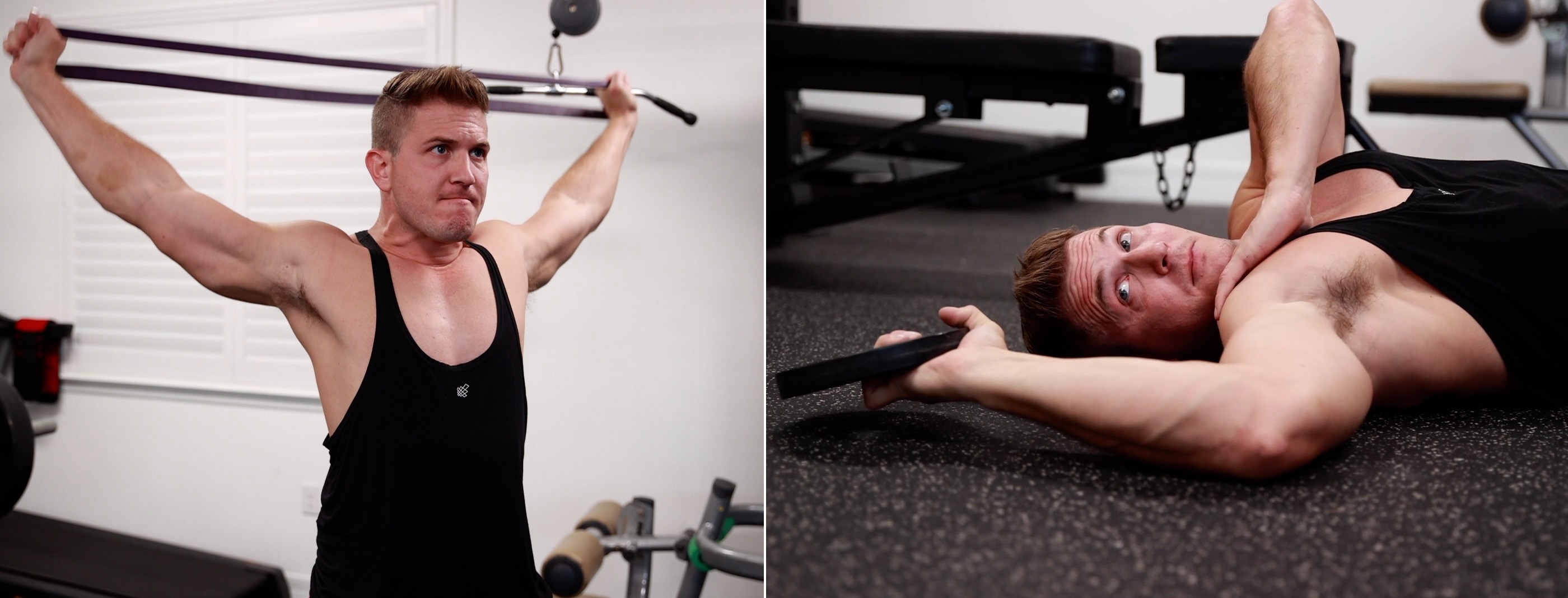
Chest Training 101: The Range Of Motion
Let’s talk about range of motion. 99.99% of you, unless you have a shoulder injury, that’s impacting your mobility, will be able to bring the barbell to your chest if your form is right. So, if you currently can’t bring the barbell to your chest, your thought process shouldn’t be coming up with excuses like “my arms are too long because I’m tall”, it should be… “hmmm I wonder what I’m doing wrong that is impacting my mobility and holding back my gains.” 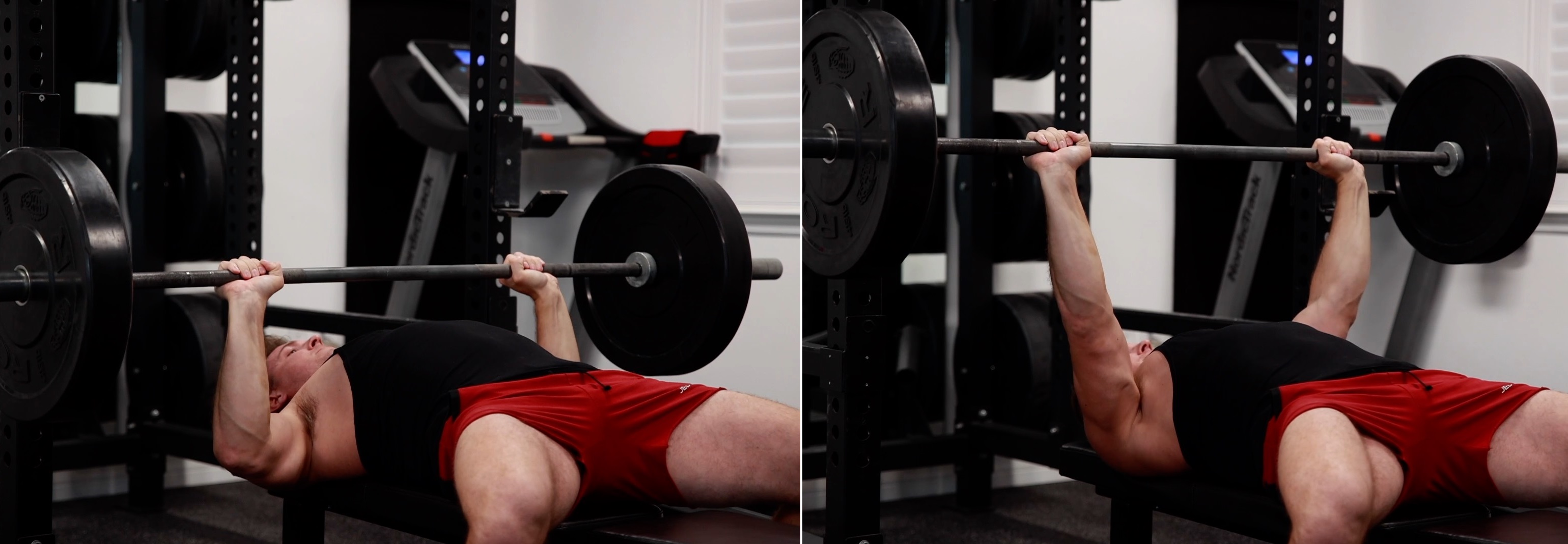
9 times out of 10, the major adjustment I have to make with my clients to fix their range of motion is getting them to depress their shoulders. So, you might be PACKING… but you’re not depressing.
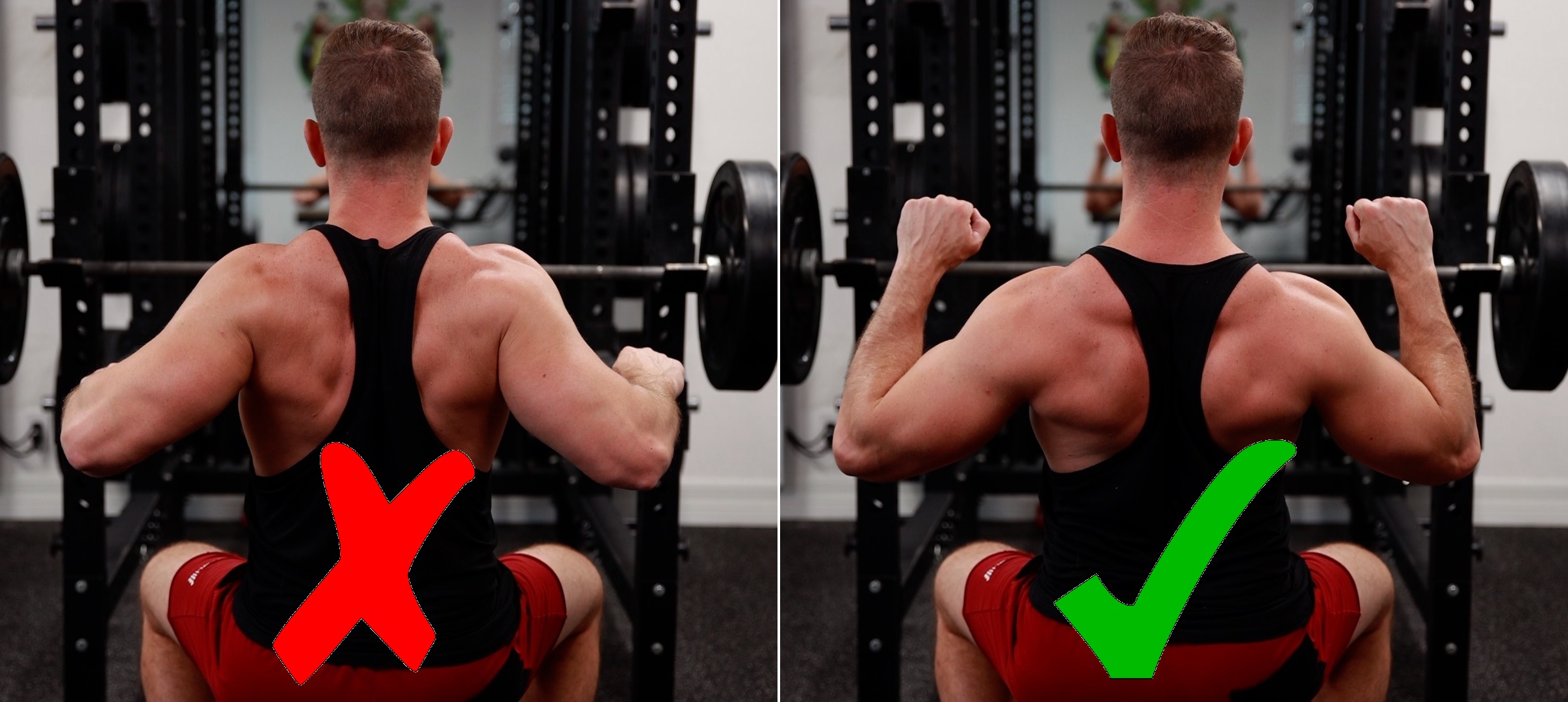
Also, if you don’t fix your range of motion now, you’re setting yourself up for a huge possible injury in the future. Remember that if you can bench say 225lbs for say 10 reps, but you stop at 90 degrees, your muscles and tendons below that point do not have the strength that is built up overtime through sets, reps and progressive overload.

So that one day when you do decide to bring that heavy load all the way day, you could be finding yourself with a one-way ticket to snap city with a popped chest tendon.
Another thing I want to address is using a shorter range of motion. Guys like to claim this builds more muscle, but the reality is that they just want to lift more impressive weight. Well, I’m not impressed, but the people who don’t know better might be.
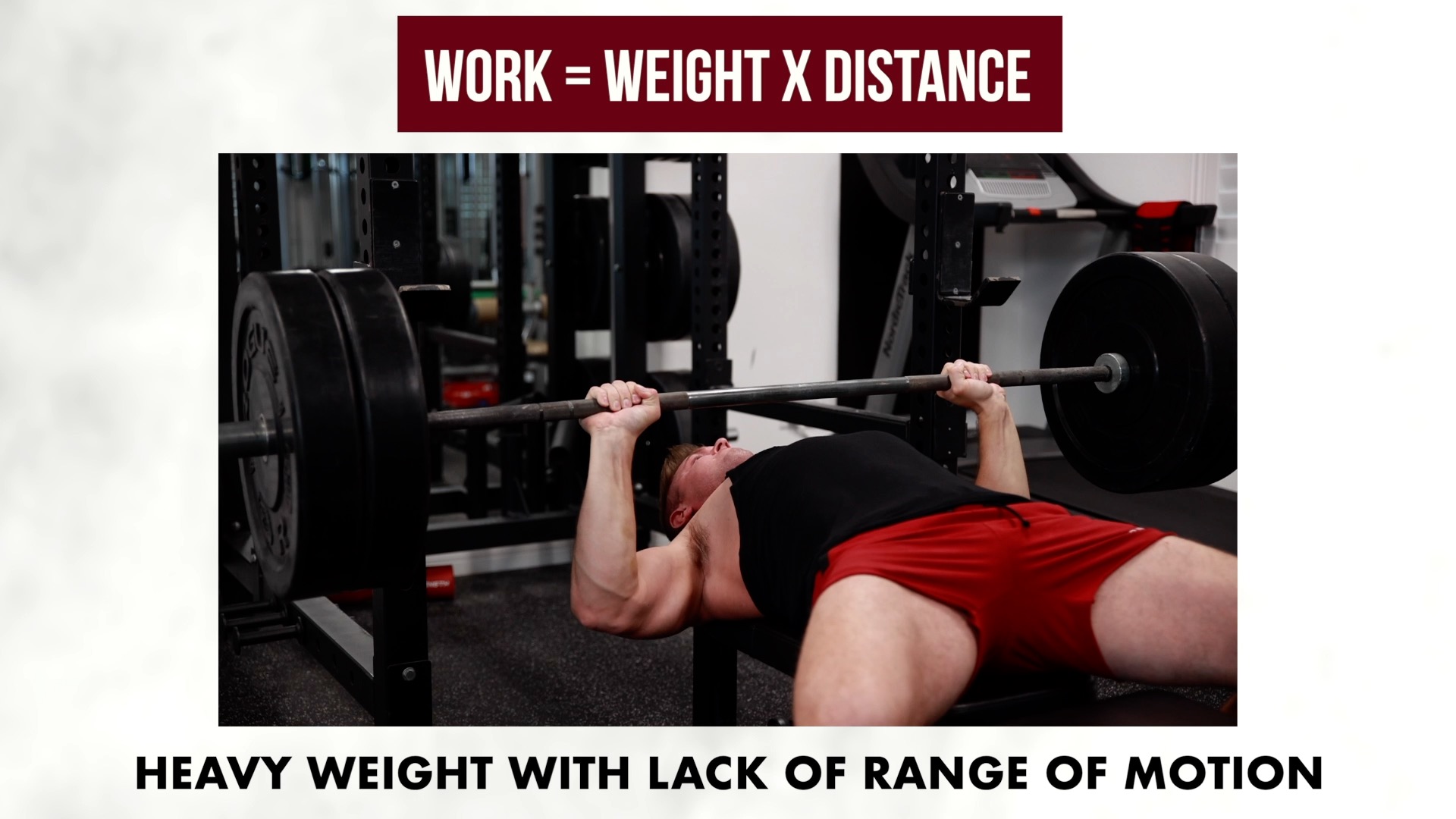
The truth is that WORK = WEIGHT X DISTANCE which means the further you move the weight, the more work you’re putting in and the more muscle fiber activation you will have in your chest during your reps
Chest Training 101: The Frequency & Workout
So let’s wrap up our chest training 101 talking about “frequency and the workout split”. I know you’re eager to see gains, but training your chest every day will most likely lead to over-training and training only once a week may not be enough total volume to see growth. I’d say TWO times a week is your optimal training frequency and that’s because your muscles need about 48 – 72 hours to recover from a hardcore workout.

That’s about 2 – 3 days, so if you train chest on Monday, you’ll be good to go again on Thursday.
As for the workout, keep it simple guys. The whole point of this series is “back to basics”, so take the tips you learned today and apply them to your training.
A great workout you can start this week would be:

Or if you’re looking for something a bit more structured, click this link HERE and try my Push-Pull-Legs Program. It’s a 3-month program that gradually increases the intensity of your workouts so if you’ve never hit the same body-parts twice a week, by month 3 you’ll be strong enough to handle that kind of the intensity.






